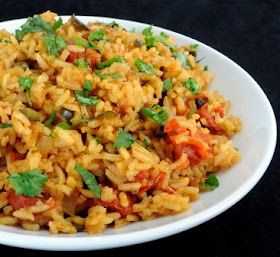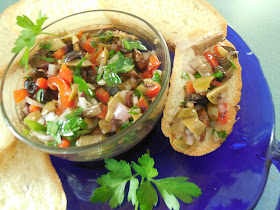I take January off for the most part. I post a few blogs, send out a few orders, do
not do any shows or lectures and I enjoy hot tea and winter weather. This year I also placed getting sick in the
mix and spent a week doing absolutely nothing. So now it is time to get back to
work.
While I was off I was working on my sorting and scanning project. (My husband has declared that my four filing
cabinets must be empty before we move.) I
have a two-year lead on that, but if I do not stay focused I will not make the
deadline so each day I spend at least an hour scanning. However, if I am really working on it I can
spend half a day, but I work on blog spots at the same time, so it works in my
favor.
This time I came across an article from the Herb Companion
Magazine on blending essential oils for fragrance.
My mother was allergic to perfume so I never got to wear any
growing up. My husband loves cologne and
would love me to wear perfume. Many times
I smell like the herbs I have harvested and he likes those scents so I thought
why not try to concoct an essential oil fragrance that I can place in a mister
or carrier oil and make my own “perfume.”
Smells or scents are routed to the brain’s limbic system,
where memory and emotion are stored.
Through scents you can trigger patterns of behavior which is why some
smells will bring back memories.
By blending essential oils you can create relaxation
patterns, stimulating patterns and even
ways of preserving new memories. The wonderful thing about an essential oil blend is you can
use it in just about any other finished product that uses essential oils, so have some fun and play with making your own personal blends.
Essential oils should never be used straight or undiluted. But, blending them into something else makes
them very versatile.
Here are a few examples:
- Place up to 8 drops of a blend in warm bath water for a soothing and aromatic bath treat.
- Add 5 drops to vegetable, jojoba or almond oil and use as a massage oil.
- Create a room mister by blending 10 drops to ¼ cup distilled water and shake together then use as a room or linen scent
- Place the undiluted oils in a small jar and use as an aromatherapy sniffer.
- Add 15 drops to a 1 ounce bottle of canola oil and place a set of wood skewers in the open jar mouth to create a decorative room scenter whose scent can be changed seasonally.
Essential oils to keep around for blending:
- Bergamot eases grieving
- Chamomile soothes and calms
- Cedar wood enhances mental clarity
- Clary sage combats depression and enhances dream memory
- Eucalyptus depletes negative energy
- Geranium works on depression, anxiety and insomnia
- Juniper cleanses and detoxifies clearing negativity
- Jasmine arouses sexual desire and creativity
- Lemon is a quick mood enhancer but also makes your mind sharper
- Patchouli strengthens and grounds
- Peppermint dispels pride, and helps one fight feelings of inferiority
- Pine invigorates and energizes
- Rose brings and remembers love
- Rosemary fosters clarity of thought
- Sandalwood stills the mind
- Sage manifests strength
- Marjoram eases loneliness and grief
- Lavender calms, cleanses balances and creates harmony
 When creating a blend just measure the essential oil by drop into a small vial and roll between your palms to blend the oils together.
When creating a blend just measure the essential oil by drop into a small vial and roll between your palms to blend the oils together.Remember each of these recipes uses 100 % pure essential oil, not perfume oil or potpourri oil which is not a pure extraction from the herb like essential oil is.
I created a mood enhancing blend called
Uplifting Bath Blend that was posted back in 2013.
It contained this:
Uplifting Bath Blend that was posted back in 2013.
It contained this:
6 drops lemon oil
6 drops geranium oil
3 drops rosemary oil
3 drops peppermint oil
3 drops juniper oil
Relaxation Blend
12 drops lavender oil
6 drops marjoram oil
6 drops clary sage oil
3 drops bergamot oil
Floral Fun Blend
This blend is for a relaxing scent and something that is
great in a bath especially for those with sensitive skin. It is the "perfume" blend I made for my hubby to enjoy on me!
4 drops lavender oil
2 drops rose absolute or rose geranium oil
3 drops neroli or orange oil
2 drops roman chamomile oil
1 to 2 drops jasmine oil
























